Browse News
|
Is Pluto a planet? Astronomers meet in Prague to decide
16/08/06
|

|
|
Members of the International Astronomical Union are currently meeting in Prague to decide on an official definition of a planet. Their decision could see the Solar System�s ninth planet Pluto downgraded or other objects upgraded in status.
Read the news item
|
1000th �sungrazing� comet spotted by SOHO
14/08/06
|
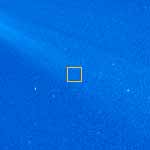
|
|
An amateur Polish astronomer has recently spotted the 1000th sungrazing comet in images from the SOHO spacecraft. These comets pass extremely close to the Sun and are known as Kreutz comets.
Read the news item
|
Asteroid named after University of Leicester scientist
07/08/06
|

|
|
Professor Jack Meadows, former Head of Astronomy and History of Science at the University of Leicester, has had an asteroid named after him in honour of his contribution to Solar System research.
Read the news item
|
Asteroid set for close encounter
02/07/06
|
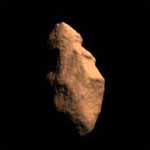
|
|
In the early hours of Monday morning an asteroid will travel past the Earth at a distance similar to that of the Moon. The asteroid, which could be up to 820 metres wide, will pose no threat to Earth.
Read the news item
|
Itokawa asteroid is a loose pile of rubble
05/06/06
|

|
|
Data from Japan�s Hayabusa spacecraft suggests asteroid Itokawa, which the craft visited last year, is a pile of loosely held rocks. The news comes as Japanese scientists announce that the craft looks likely to make the return journey back to Earth.
Read the news item
|
Scientists spot crater beneath East Antarctic Ice Sheet
04/06/06
|
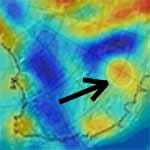
|
|
American scientists have found what appears to be a 480 kilometre-wide asteroid crater beneath the East Antarctic Ice Sheet.
Read the news item
|
Best view of comet break-up this weekend
11/05/06
|
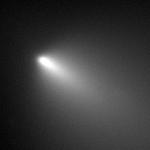
|
|
Over the next few days astronomers will have a ringside seat to watch comet 73P/Schwassmann-Wachmann 3 as it disintegrates in front of their eyes.
Read the news item
|
Remains of asteroid that caused huge crater discovered
11/05/06
|
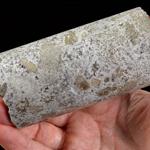
|
|
The remains of an asteroid that crashed into Earth creating a 160 kilometre-wide crater have been discovered in Africa. Large asteroids were previously thought to completely melt or vaporise on impact, but this finding proves fragments can survive impacts
Read the news item
|
Largest Saharan asteroid crater discovered
06/03/06
|
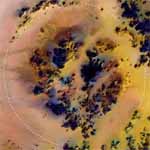
|
|
American researchers have discovered the remnants of the largest crater in the Saharan desert. The crater is around 31 kilometres wide, and may have been formed by an asteroid, tens of millions of years ago.
Read the news item
|
�Asteroids� orbiting near Jupiter are actually comets
03/02/06
|
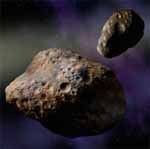
|
|
Astronomers have discovered that a binary pair of �asteroids� orbiting near Jupiter are actually more like comets, and may have originated from the outer Solar System.
Read the news item
|
Stardust successfully returns comet material to Earth
16/01/06
|
|
|
A capsule containing cometary and interstellar material collected by the Stardust spacecraft successfully landed in Utah yesterday, becoming the first mission to return samples from beyond the Earth-Moon system.
Read the news item
|
Hayabusa's return to Earth postponed until 2010
14/12/05
|

|
|
The Japanese Space Agency will postpone the return to Earth flight of Hayabusa to 2010, after losing contact with the probe. The announcement came shortly the Agency learnt that the second asteroid sample collection probably failed.
Read the news item
|
Hayabusa collects asteroid sample
29/11/05
|

|
|
Hayabusa's second attempt to collect a sample from the surface of Itokawa was successful, making it the first spacecraft to collect asteroid material.
Read the news item
|
Japanese announce that Hayabusa did land on Itokawa
24/11/05
|
|
|
The Japanese space agency has announced that their spacecraft Hayabusa did in fact land on asteroid Itokawa on Saturday, but the equipment designed to collect a sample was not deployed.
Read the news item
|
First Hayabusa sample collection fails, but UK names are delivered to asteroid
21/11/05
|
|
|
The Japanese Hayabusa spacecraft failed in its first attempt to collect a sample of material from asteroid Itokawa. The target marker, containing an aluminium sheet with hundreds of UK names printed on, was successfully deployed to the surface.
Read the news item
|
More news stories
1,
2,
3,
4,
5,
6,
7,
8,
9,
10,
11,
12,
13,
14,
15,
16,
17,
18,
19,
click to view more pages
|
|
|
� NEO Information Centre
last updated on
25/09/06
[email protected]
|

Operated by a consortium led by the
National Space Centre
|

